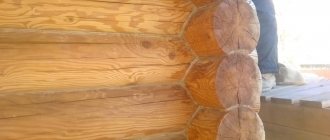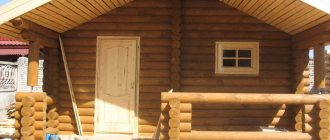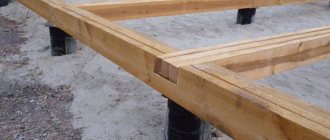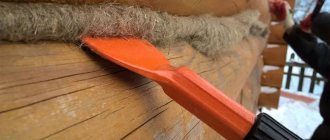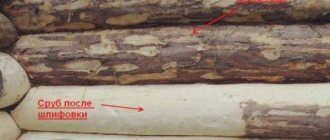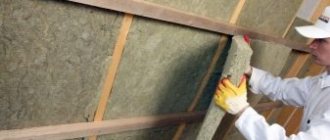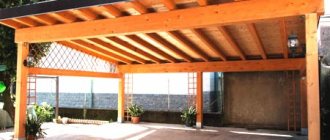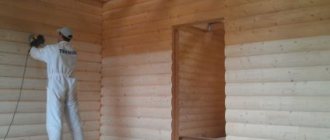Caulking a wooden house is an important stage in insulating a finished structure using natural or synthetic heat insulators. Here every detail matters: the right working tool, high-quality insulating material, technology for performing the work. Not all homeowners know how to properly seal roof gaps and joints in order to reduce possible heat loss, avoid distortion of the house structure, and prevent rotting of wood and heat insulation.
Why is caulking of a log house done?
Thermal insulation of a log house helps retain heat in the premises, prevents deformation of the wood and a decrease in its operational parameters. Modern insulation materials are durable, practical and safe, and therefore provide high-quality caulking for wooden buildings.
Log caulking solves the following problems:
- eliminates cold bridges and reduces heat loss at home;
- corrects construction defects;
- eliminates various defects in external and internal corners, crowns, door and window openings;
- makes the house more attractive and reliable;
- increases the service life of wood.
Is it necessary to caulk a house made of timber?
When constructing timber houses, insulation is laid on each crown. Under its own weight, the log house invariably shrinks. This is a natural process and cannot be avoided. The wood dries out and changes its geometric parameters: the timber “sits”, the insulation wrinkles in places, and cracks appear. This may not be noticeable to the eye, but on average a log house 3 meters high can shrink by 10-12 cm after a year.
Gaps in timber after shrinkage Source content.onliner.by
To improve the thermal performance of a timber house, the timber must be caulked. This procedure is needed for the following purposes:
- Prevent heat leakage . During shrinkage, cracks appear between the crowns of the log house, the so-called “cold bridges”. Drafts appear and heat is blown out. Caulking allows you to retain heat and improve the thermal performance of your home.
- Elimination of icing of walls . In the absence of caulking, heat will escape through the cracks formed when the timber shrinks. Due to the difference in temperatures during the cold season, moisture entering the cracks of the timber freezes, which leads to further cracking of the wood.
- Increased home performance . After caulking, a full thermal balance will be created in the log house. Heat conservation will save resources on heating your home. The log house will be in more comfortable operating conditions in the complete absence of icing on the external and internal walls.
This is what a caulked timber looks like Source 1brus.ru
Caulking is a mandatory step in construction. It will keep the house warm, save heating resources, and also increase the service life of the building as a whole.
When is caulking done?
Caulking a wooden house is carried out in several stages, and this is explained by the gradual shrinkage of the wood. Maximum shrinkage occurs during the first 18 months after completion of construction work and stops after 5 years.
- The first stage of caulking is performed after assembling the log structure. In this case, when building a house, thermal insulation material fills the space between the logs so that the edges hang freely on both sides. After installing the roof structure, the insulation is driven into the connecting seams between the crowns.
- The second stage of insulation is carried out 1.5 years after the completion of construction work and preliminary shrinkage of the house. The insulating material is laid tightly enough to hide all the gaps and cracks.
- The third stage of caulking is carried out after 5 years, when the process of shrinkage of the log house is considered completely completed. All existing defects between the logs are filled with insulation.
Important! For a log house, all three caulking steps are carried out, but for a house made of timber, which will be lined with siding on the outside, the third stage of caulking is optional.
Briefly about the main thing
Caulking involves sealing cracks in a log house with insulating material. It is necessary to caulk the house after the timber shrinks. This must be done twice, and in the absence of outer cladding - three times.
Caulking is done using various materials. The main thing is that they meet the requirements of heat conservation, are environmentally friendly and durable in use. Traditional materials are represented by moss, tow and hemp. Modern ones - jute and linen felt.
Depending on the width of the gaps that appear after shrinkage, they can be caulked in two different ways using rolled or fibrous materials: the “stretch” method or the “set-up” method.
Caulking materials
For caulking timber or logs, it is better to use natural insulation materials that have the following characteristics:
- hygroscopicity,
- resistance to temperature changes,
- breathability,
- environmental Safety,
- ease of installation.
Such insulation materials include:
- moss (red and white),
- tow,
- flax wool,
- jute.
Moss
The safest and most practical material with excellent antiseptic properties. It provides reliable protection of wood from rotting and biological damage.
Moss (sphagnum) is a reliable material for sealing crown joints: it allows air to pass through well and quickly absorbs excess moisture, prevents the development of pathogenic microorganisms and fungi, thereby increasing the service life of wood.
Moss is resistant to fire and decay, so it can maintain its performance characteristics for a long time. High cost is the only drawback of this material.
Self-procurement of raw materials will significantly reduce the cost of thermal insulation of a house made of logs or timber.
Before caulking the walls, the pre-prepared moss must have a suitable level of humidity - not be overly dry or moist.
Tow
A practical and safe material that is used for caulking crowns after complete shrinkage of the log house. It is made from hemp, jute and flax fibers.
Sold in compressed bales or rolls. Tow in bales has short and hard fibers, which complicate the process of driving crown joints. High quality tape tow has long, elastic and soft fibers.
This material has low antiseptic properties and is susceptible to high moisture, so it requires additional treatment with protective impregnations or paints.
The high content of brome (coarse flax and hemp waste) leads to rapid wear of tow, so caulking is carried out every 3-4 years.
The main disadvantages of insulation include the difficulty of installation, the unattractive appearance of the treated seams, and a short service life.
Lnovatin
A natural material for caulking wooden houses, which is produced by pressing short flax fiber into strips. Linen wool has high heat-insulating and moisture-resistant characteristics. Such insulation can provide reliable protection of wood from rotting and mold.
Linen batting is used to seal seams between crowns with fixation on metal staples.
Jute
The highest quality and most durable tape insulation for caulking houses made of logs or timber. The material has high heat-saving properties and is not susceptible to rotting and mold. Even with prolonged exposure to moisture, jute fiber remains practically dry.
Jute is used for primary and secondary thermal insulation of a house. It has high strength, wear resistance, elasticity and practicality. It is placed in interventional seams with fixation with staples.
The only drawback of the material is its high cost.
Services of professional caulkers
Entrust the caulking of your home or bathhouse to qualified specialists who will quickly and efficiently complete all the work. We employ caulkers with ten years of experience who are well aware of all the subtleties and nuances of caulking. We use high-quality and dried natural materials that meet all requirements. We work under a contract and provide quality guarantees. Our specialists will make caulking of any complexity and volume at an affordable cost. Contact us in any convenient way using the coordinates in the “Contacts” section.
Calculate the cost of painting and insulating your home right now
Select types of work:
Select materials:
Caulking tools
If natural materials are used for thermal insulation of a wooden house, then before caulking you should prepare:
- Kiyanku. A small wooden or rubber hammer designed for laying insulation using wooden caulks.
- Stacked caulk. A spatula with a metal or wooden base, blade width 10 cm, thickness 0.5 cm. This is the main tool for caulking the crowns of a log house.
- Crooked caulk. A curved chisel with a flat blade 5 cm wide and 0.5 cm thick. Used for filling corner seams and gaps in rounded areas of the building with insulation.
- Road worker. Triangular blade with a special longitudinal groove. The blade width is 17 cm, thickness is from 0.8 to 1.5 cm. The tool is intended for filling gaps of equal width.
- Breaking caulk. A narrowed wedge-shaped blade up to 3.5 cm wide, which allows you to widen the inter-crown gaps for the convenience of laying heat-insulating material.
Important! All caulking blades should be slightly dull and smooth to avoid damaging the wood and pulling the insulation out of the seams. Before starting work, the tools are thoroughly cleaned with a clean cloth.
Tow
It is also a natural material that is very familiar to plumbers. Due to its fibrous structure, it serves as a good sealant. Some craftsmen are not very fond of this fiber. The fact is that it is quite difficult to work with him. Also, over time, the tow becomes unusable, which will force you to take out its remains and do everything again. Before laying it, it will be necessary to treat it with a special substance that will serve as an antiseptic and also repel insects that can feed on both the fibers themselves and cause harm to the wood.
Felt
Log caulking technology
The process of caulking a log house is carried out in stages. There are two caulking methods:
- in a stretch,
- to the set.
It doesn’t matter what method is used to caulk a house, all insulation work begins from the bottom crown. Next we will look at how to properly caulk a wooden structure.
Stretch
Stretch caulk involves insulating the seams between logs with pre-stretched insulation. For this purpose, fibrous and rolled materials are used.
Fiber insulation
- Work is carried out from the ends of the lower crown. A small part of the insulation (for example, tow or moss) is applied with transverse fibers to the seam and hammered inside with caulking.
- Along the edges, the insulation is rolled up into a small roller and compacted into a crown joint.
- Next, a new portion of insulation is used, which is formed into a roller, and the entire caulking procedure is repeated. This allows for high-quality sealing of the seam along its entire length.
Roll insulation
Dense rolls from roll insulation are much easier to obtain. For uniform distribution, the material is carefully stretched along the entire length of the seam and applied to it across the fibers.
- The tape is unwound on a flat surface from one of the corners to the opposite corner.
- Hooking it up by the free edge, using caulking, the insulation is laid into the inter-crown seam so that the free edges hang down by 5 cm. This way the entire length of the seam is filled.
- After the seam is completely filled, the tape is cut off from the roll.
- The rest of the insulation is driven into large cracks between the logs. The insulated seam must have the same thickness and protrude 3 mm beyond the edges of the grooves.
Included in the set
Caulking in the kit allows you to insulate wide and deep gaps between logs. Here, a larger volume of material is used, and accordingly, the quality of thermal insulation is higher. Tow, hemp rope or jute cord are suitable for this.
- To caulk a log house with jute (the easiest option for beginners), a small amount of material is unwound and folded into loops. Next, each loop is placed into the seam using caulk.
- Hammering loops begins at the top of the seam and then continues at the bottom.
- An additional strand is placed on top of the laid insulation for better insulation. The material is leveled along the entire length of the seam using a road builder.
If desired, insulation of the house in this way can be accelerated. In this case, the heat-insulating material is driven in using a hammer drill. The tool is used at low speed to prevent seam deformation. A pneumatic hammer with a compressor is also suitable for laying insulation.
Moss
Red marsh moss is used for these purposes. This is one of the most environmentally friendly methods. It serves as a kind of antiseptic that prevents rotting. It has been used for centuries. This material allows the wood to breathe best. You can’t lay it too wet, you need to let it dry a little.
If this is not done, this may lead to the joints beginning to rot and the structure becoming unusable. But it is also not recommended to lay it dry. In this state, it will crumble easily, and subsequently will not be able to seal the seams hermetically. Before driving it, it is necessary to carry out certain processing. A water-based solution (10 l) is prepared, to which 500 ml of oil and 250 g of laundry soap are added. Everything is mixed until the soap is completely dissolved. After this, the moss is soaked and laid to drain a little. To make the roller easier to form, some craftsmen add tow fibers.
Tow
Caulking corners
The corners in the log house are insulated after the main work is completed.
To do this, it is better to use rolled insulation and curved caulk. The process works as follows:
- The free edge of the tape insulation is applied to the seam located in the corner and filled with crooked caulk.
- After installing the material, its free edges are rolled up and hammered into the seam.
- All work on laying insulation is carried out from top to bottom. To ensure uniform driving, the material is carefully stretched and straightened.
Felt
An excellent material that, like moss, allows the tree to breathe. It is a good filter that does not allow odors to pass through. Additional synthetic inclusions began to be added to modern material, which made it even more durable. The main disadvantage of using this solution is that moths love to feast on felt. Before caulking, it is treated with special compounds that repel this insect.
Lnovatin
Approximate costs
The cost of the work of craftsmen, regardless of the type of insulation material, is on average in the Russian Federation - 45 rubles per 1 sq. m. m, there are prices for 1 linear meter in the Moscow region - 65–70 rubles.
Removing old tow will cost about 30 rubles. for 1 m.
At the same time, the average prices for insulation materials in the Russian Federation:
- Jute tape - 9–16 rubles/1 linear line. m.
- Linen wool - 5–7 rubles/linear. m.
- Jute tow - 135 rubles/kg.
- Hemp hemp - 100 rubles/kg.
- Linen tow - 75 rubles/kg.
- Moss - 300 rubles/45 liter bag.
Which is better to choose?
- Moss is the most environmentally friendly and durable material, but it is very difficult to obtain, to ensure compliance with installation technology and the need to maintain optimal moisture content of the insulation, since it crumbles when it dries out. Requires skilled work. Therefore, using moss will be the best solution if you have good caulkers.
- Linen tow is less strong and durable, and has low performance characteristics. Not suitable for timber walls due to high hygroscopicity.
- Hemp hemp is the best option, but is difficult to obtain. Natural jute is a good material, but has a short shelf life. Its advantage is density - 300-400 g/sq.m. m.
- Jute is the best insulation for a house made of profiled timber. It has a high density, and a layer of 3-4 mm is enough to lay it. If jute is not suitable for some reason, linen felt 5-10 mm thick will be an excellent solution for insulation.
Sealing of inter-crown seams
Sealing seams is easier and faster than caulking using sealants. It is easier to work with them than with insulating inter-crown materials. Neomid's sealed formulations have proven themselves well: Word Professional and Word Professional plus. These products are very similar to each other, but only the second sealant is more elastic and can be applied to surfaces with a large angle of inclination. Otherwise they are no different.
Neomid sealants have good adhesion, excellent adhesion to wooden material and excellent elasticity. Sealed compounds are applied using a construction gun. The sealed seam is not afraid of weathering, moisture, does not turn yellow under the influence of sunlight, and mold does not form on it.
Quality checking
Many owners of log houses hire construction crews to carry out such work. In this case, you need to know how to check the quality of the seams between the crowns.
You can use two methods:
You should try pushing a regular awl or knife into the seams. If it barely penetrates to a length of 15 cm and is not visible from the opposite side, the caulk is made with high quality.- You can also try pushing the caulk between the seams yourself using a mallet. Usually it rests on a dense layer of insulation.
The best option not to make a mistake is to choose a knowledgeable person who will take responsibility for monitoring the work.
Then we can hope that the builders will not “crash” and the caulking will be carried out according to all the rules.
Requirements for insulation
There are many insulation materials on the market, but not all of them are suitable for log houses. Polyurethane foam and synthetic analogues lead to dampness in the building, rot, mold and other related problems.
The best option is to choose materials that have the following characteristics:
- Environmental friendliness. Since log houses are built with this property of wood in mind, the insulation materials must have the same quality.
- Hygroscopicity. The ability to accumulate and release moisture without loss of thermal characteristics is very important.
- Breathability. Do not interfere with the flow of warm air.
- Antiseptic properties. Such insulation does not harbor pests, mold and fungi.
- Low thermal conductivity. Materials for caulking should easily withstand temperature changes without losing physical properties and retain heat well inside the house.
- Elasticity. This property allows wood to change its size without harming the structure.
- Density. A characteristic that will allow the insulation to withstand the pressure of beams and wind flows.
The most important quality of a good material for caulking is low thermal conductivity. It should be less than that of wood. The lower this value, the longer the material retains heat.
For pine timber, the thermal conductivity will be 0.015 W/(m °C) across the fibers, and 0.004 W/(m °C) along the fibers. For comparison, the thermal conductivity of jute fiber is 0.036 W/(m °C), and that of flax tow is 0.034 W/(m °C).
Customer reviews
Several years ago, my family and I built a country house from rounded logs. During construction, insulation material was laid between the crowns. At this point, I decided that we had sorted out the insulation of the house. But for a year, our neighbor insisted that I caulk all the walls after the house was completely settled. As a result, he persuaded me.
We chose the materials for the upcoming work together and purchased inexpensive but quite good flax wool insulation in the form of tow. The work was not easy, it took us three days, while we insulated the house with our neighbor from early morning until evening. I’ll say right away that caulk is for diligent and attentive people. We noticed minor cracks on the rounded log; we had no desire to caulk them, but they spoiled the appearance of the house, so we had to get rid of them. To eliminate them, the hardware store offered a sealed composition of domestic production, and with it the work progressed much faster. If it weren't for our neighbor, our family would have had to freeze on cold winter days. And the house we caulked is now very warm and cozy.
Anatoly Kosenko, 27 years old (Barnaul).
Preparatory work
Impregnation of wood with antiseptic
Since jute is a durable material, there may be no need for re-caulking, which saves time and money. But still, in order for a self-made caulking to last a long time and reliably seal your home, it must be installed correctly. To do this, you need to prepare in advance, prepare your tools. You should choose jute of a width that matches the width of the gaps between the logs.
To prevent the logs from rotting and collapsing, the cracks should be properly treated before caulking. For this purpose, special wood antiseptics are used. The sealant should be placed only in dry cracks. It is best to carry out caulking in the summer, warm dry spring or autumn. The air temperature should not be below +10° C, there should be no rain. Too hot weather is also not suitable, as the logs dry out unnecessarily, which can result in overuse of jute.
Jute materials are easily torn by hand. Without using any special means, you can install the seal yourself quickly and easily. But such a finish will not have a completely aesthetic appearance, so it cannot be used for walls that carry a decorative load. To make caulked walls look neater, the pieces of insulation need to be identical and have smooth edges. To do this, the jute must be cut with a sharp knife or scissors. Therefore, the tools should be sharpened in advance.
You need to squeeze the sealant into the gap carefully, using a special metal caulk, which visually resembles a small chisel. If one is not available, it can be replaced with a thin chisel. To drive the seal into the gap, you will also need a hammer and a rubber mallet. If the gaps are small, then you can use a jute rope of small diameter. If the rope is narrow and the gaps are large, then it is better to fold it several times.
Synthetics and sealants
Synthetic caulking is used in combination with rough jute tape, or, for “aesthetics,” with twisted white jute rope. The rough tape is placed in the grooves of the log house under caulking with sealants without wings, flush with the edges of the groove. If the logs have a Finnish groove, then the edges of the tape should lie exactly on the longitudinal cuts in the log under the edge protrusions of the groove of the upper log.
Sealants for wood are chemically neutral polyurethane: silicone is less compatible with wood in terms of mechanical and physico-chemical properties (in particular, in terms of the thermal expansion coefficient TCR), and is destroyed under the influence of even very weak acids. In turn, the silicone solvent - acetic acid - spoils the wood, so do not try to replace special sealants for wood with ordinary construction ones. Synthetics are used to caulk mainly log houses made of laminated logs and timber - their estimated service life is the same as that of glue joints of laminated lumber.
Caulking with sealants is done quickly and simply: the initial composition is squeezed out of the tube into the groove, pos. 1 in Fig.. When it has set, the seams are puttied on top with a finishing compound to match the wood, pos. 2.:
Caulking a log house and sealing cracks in logs with synthetic sealants
There is also an “ultra-modern” method of caulking log houses built without rough caulking at all: cuts are made along the seams, strands of self-expanding polyethylene foam are inserted into them and sealed with wood-like sealant, pos. 3. In essence, this is no longer caulking, because This method is suitable for buildings made of lumber without shaped grooves, assembled on dowels and impregnated with water repellents (water-repellent impregnations). In addition, it is only suitable for selected chamber-drying materials that are completely dried and settled. And then what will happen with warping from moisture during operation - we’ll wait and see: in practice, “caulk-free caulking” has so far been used for no more than 10-12 years.
Let's return to caulking, which is still caulking, albeit synthetic. Finishing compounds darken when dry, so they are selected to match the wood using test strokes on the container. But in the light, the finishing synthetic caulk fades and the walls of the log house take on the appearance shown in pos. 4. Some people, since such “decoration” cannot be avoided, order caulking seams to be glued or filled with white twisted cord. How much this adds “aesthetics and respect” to the building is a matter of taste of the owner. And there is no arguing about tastes. Moreover, about the tastes of people who believe that natural wood needs additional “refinement”.
It is much more practical to use synthetic caulk to seal gaping cracks in logs, pos. 5 in Fig. On top of the sealant, the cracks are filled with any wood putty for exterior use, and the entire structure is rejuvenated. The putty has to be renewed every 2-3 years - it also fades in the light - but this doesn’t last long, it’s not difficult and inexpensive.
